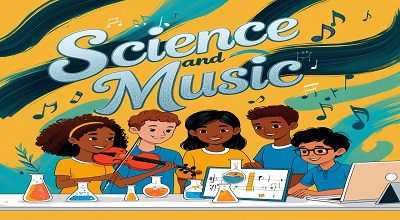Science and music in education
Science and music in education: In today’s fast-evolving educational landscape, innovative teaching strategies are essential to engage students and enhance learning outcomes. One such powerful approach is combining science and music to foster deeper cognitive development, memory retention, and emotional engagement. Research has consistently shown that music stimulates brain activity, improves focus, and even enhances mathematical and linguistic abilities.
At TeacherEducator.com, we explore the latest findings on how integrating music into science education can revolutionize learning experiences. This comprehensive guide delves into the neuroscience behind music’s impact on learning, practical classroom strategies, and cutting-edge research that supports this interdisciplinary approach.
The Neuroscience of Music and Learning
How Music Affects the Brain?
Music activates multiple brain regions, including the auditory cortex, hippocampus (memory), and prefrontal cortex (decision-making). Studies using fMRI scans reveal that listening to music enhances neural connectivity, making it easier for students to absorb and retain information.
The Role of Rhythm and Melody in Cognitive Processing
Rhythm helps structure information, making complex scientific concepts easier to grasp. Melody, on the other hand, aids emotional engagement, which is crucial for long-term retention.
Music’s Impact on Memory and Recall
Research shows that students who learn through musical mnemonics perform better in recall tests. For example, setting the periodic table to a song can help chemistry students memorize elements more effectively.
Science and Music: A Powerful Educational Duo
Enhancing STEM Learning Through Music
- Mathematics & Music: Patterns in rhythm align with mathematical sequences.
- Physics of Sound: Teaching wave theory through musical instruments.
- Biology & Music: Exploring how the brain processes sound.
Case Studies: Schools Successfully Using Music in Science Education
- The Harmony Project (USA): Improved STEM scores through music integration.
- Musical Science Labs in Finland: A national model for interdisciplinary learning.
The Mozart Effect – Myth or Reality?
While the idea that listening to Mozart boosts IQ has been debated, structured musical training does enhance spatial-temporal reasoning, benefiting science learning.
Practical Strategies for Integrating Music into Science Lessons
Using Songs to Teach Scientific Concepts
- Example: A song about photosynthesis to explain plant biology.
- Example: A rap about Newton’s laws of motion.
Incorporating Musical Instruments in Experiments
- Sound Waves Lab: Using tuning forks and oscilloscopes.
- Frequency & Pitch Experiments: With digital music software.
Creating Science-Themed Music Projects
- Student-Composed Songs: Encouraging creativity while reinforcing concepts.
- Podcasts with Scientific Soundtracks: Merging storytelling and music.
The Psychological Benefits of Music in Learning
Reducing Anxiety and Improving Focus
Soft background music (e.g., classical or ambient) can lower stress levels, making students more receptive to learning.
Boosting Creativity and Problem-Solving Skills
Music stimulates divergent thinking, essential for scientific innovation.
The Role of Music in Special Education
Children with ADHD or autism often respond positively to structured musical learning.
Latest Research and Innovations
AI and Music-Based Learning Tools
- Apps like Brain.fm use AI-generated music to enhance concentration.
- ChatGPT-powered lyric generators for science songs.
Virtual Reality (VR) and Immersive Musical Science Experiences
- VR labs where students “travel” inside a cell with a musical soundtrack.
Future Trends in Educational Music Integration
- Personalized learning playlists based on cognitive profiles.
- Gamified music-science challenges in classrooms.
Challenges and Considerations
Addressing Skepticism Among Educators
- Providing evidence-based research to convince traditionalists.
Balancing Curriculum Demands with Creative Approaches
- Aligning music integration with standardized testing requirements.
Accessibility and Inclusivity in Music-Based Learning
- Ensuring programs are adaptable for students with hearing impairments.
FAQs
Q1: Does listening to music while studying actually help?
A: Yes, but it depends on the type of music. Instrumental and low-tempo music enhances focus, while lyrics can be distracting.
Q2: Can music improve test scores in science subjects?
A: Studies suggest that music-integrated learning improves retention and understanding, leading to better performance.
Q3: How can teachers with no musical background implement this?
A: Simple strategies like using pre-made science songs or rhythm clapping for memorization don’t require musical expertise.
Q4: Is this approach effective for all age groups?
A: Yes, from elementary (using songs) to university levels (analyzing sound waves in physics).
Q5: Are there any downsides to combining music and science education?
A: Potential challenges include distraction for some students and the need for proper implementation training for teachers.
Conclusion
Combining science and music is more than just an innovative teaching method—it’s a brain-boosting, engagement-enhancing, and memory-strengthening strategy backed by neuroscience. As education continues to evolve, interdisciplinary approaches like this will play a crucial role in shaping future-ready learners.
